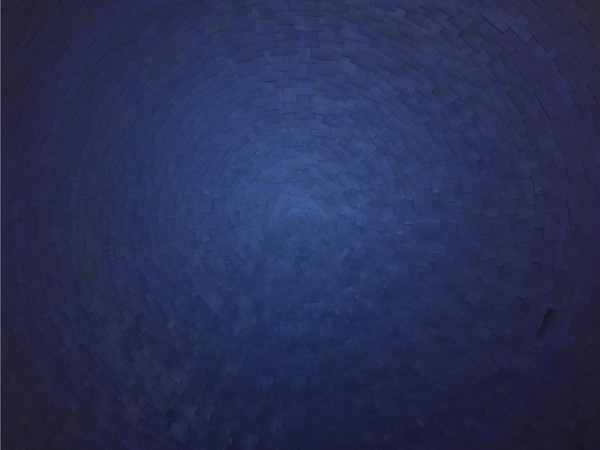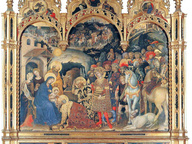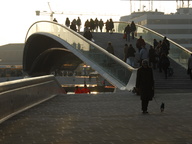Lisa Bartleson. Woman in Light

Lisa Bartleson. Woman in Light, Raffaella De Chirico Contemporary, Torino
From 15 Luglio 2014 to 21 Settembre 2014
Turin
Place: Raffaella De Chirico Contemporary
Address: via della Rocca 19 - via Giolitti 52
Times: Tuesday, Wednesday, Friday 12 am - 7:30 pm; Thursday 2:30 -10 pm; Saturday, Sunday, Monday by appointment
Telefono per informazioni: +39 011 835357
E-Mail info: info@dechiricogalleriadarte.it
Official site: http://www.dechiricogalleriadarte.com
“Woman in Light” is the exhibition dedicated to Lisa Bartleson (Seattle Washington, 1968), the artist heir of Light and Space movement. During Sixties/Seventies, in California, many artists have been associated because of the use of light in their artworks as a tool to create existential spaces for enhancing individual feelings.
Bartleson’s research moves over experimentation on light and space: each artwork is composed by a sort of new technique of mosaic. The hundreds small pieces of Mylar – a plastic material born in the US during Sixties to satisfy artists in their desire of innovation and of pursuing new aims and emotions – have been arranged with the artistic approach called accumulation. These technique has been experimented many times during the Twentieth Century and in Bartleson’s become gesture, essential to release her creativity.
Lisa Bartleson started out as a biologist, and thus with a scientific mind but it is her emotional sphere to prevail in her life and, consequently, in her art. A light, subtle emotionality made of small things and moments: a scenario, a gesture, a sunset, but above all colour and the power of light. She doesn’t need any form because her aim is to illustrate what it is impossible to be represented. And she is able to acheive this goal throughout the use of colours and shades, perfectly combined to enhance the sense of mouvement. Bartleson cannot do without light, the infinite nuances that light offers the gaze, creating millions of different shades of colour. The outstanding expressivity of this woman and artist lies in the power of colour, which bursts forth with overwhelming force in her life, her gaze and her art.
The exhibition consists in a sort of light show – by a musical point of view assimilable to the experimentations during Jefferson Airplane or Pink Floyd’s concerts – because it stages an intense visual experience. It won’t be the use of avant-garde technologies to catch the eyes of the public but the trick of the light produced by the Mylar. Furthermore, the surface of this new mosaic and the whole work is “drenched”, immersed in transparent resin, which makes it completely glossy and reflecting. Yet another experimentation, this time visual, that allows the onlooker to perceive not only the sense of internal depth of the structure of the painting, given by the colour and the way it is composed on the surface, but also the “refraction” of the light caused by the glossy surface of the work. We can therefore say that Bartleson’s works contain, and offer themselves to the gaze through, both an “internal” light deriving from the colour nuances and the composition as such, and an “external” light caused by the refraction of light on the surface. This kinetic and visual experiment is typically Californian, linked to the tradition of the Light and Space movement, but at the same time it is incredibly and perhaps unconsciously rooted in the Italian tradition of mosaic art: yet another proof of the vast possibilities offered by art to the world, from its origins until today.
Bartleson’s research moves over experimentation on light and space: each artwork is composed by a sort of new technique of mosaic. The hundreds small pieces of Mylar – a plastic material born in the US during Sixties to satisfy artists in their desire of innovation and of pursuing new aims and emotions – have been arranged with the artistic approach called accumulation. These technique has been experimented many times during the Twentieth Century and in Bartleson’s become gesture, essential to release her creativity.
Lisa Bartleson started out as a biologist, and thus with a scientific mind but it is her emotional sphere to prevail in her life and, consequently, in her art. A light, subtle emotionality made of small things and moments: a scenario, a gesture, a sunset, but above all colour and the power of light. She doesn’t need any form because her aim is to illustrate what it is impossible to be represented. And she is able to acheive this goal throughout the use of colours and shades, perfectly combined to enhance the sense of mouvement. Bartleson cannot do without light, the infinite nuances that light offers the gaze, creating millions of different shades of colour. The outstanding expressivity of this woman and artist lies in the power of colour, which bursts forth with overwhelming force in her life, her gaze and her art.
The exhibition consists in a sort of light show – by a musical point of view assimilable to the experimentations during Jefferson Airplane or Pink Floyd’s concerts – because it stages an intense visual experience. It won’t be the use of avant-garde technologies to catch the eyes of the public but the trick of the light produced by the Mylar. Furthermore, the surface of this new mosaic and the whole work is “drenched”, immersed in transparent resin, which makes it completely glossy and reflecting. Yet another experimentation, this time visual, that allows the onlooker to perceive not only the sense of internal depth of the structure of the painting, given by the colour and the way it is composed on the surface, but also the “refraction” of the light caused by the glossy surface of the work. We can therefore say that Bartleson’s works contain, and offer themselves to the gaze through, both an “internal” light deriving from the colour nuances and the composition as such, and an “external” light caused by the refraction of light on the surface. This kinetic and visual experiment is typically Californian, linked to the tradition of the Light and Space movement, but at the same time it is incredibly and perhaps unconsciously rooted in the Italian tradition of mosaic art: yet another proof of the vast possibilities offered by art to the world, from its origins until today.
SCARICA IL COMUNICATO IN PDF
COMMENTI

-
 Dal 31 gennaio 2024 al 04 maggio 2025
Fermo | Palazzo dei Priori
Dal 31 gennaio 2024 al 04 maggio 2025
Fermo | Palazzo dei Priori
-
 Dal 20 dicembre 2024 al 04 maggio 2025
Fermo | Palazzo dei Priori
Dal 20 dicembre 2024 al 04 maggio 2025
Fermo | Palazzo dei Priori
-
 Dal 20 dicembre 2024 al 04 maggio 2024
Gorizia | Palazzo Attems Petzenstein
Dal 20 dicembre 2024 al 04 maggio 2024
Gorizia | Palazzo Attems Petzenstein
-
 Dal 18 dicembre 2024 al 18 dicembre 2024
Venezia | Museo Correr
Dal 18 dicembre 2024 al 18 dicembre 2024
Venezia | Museo Correr
-
 Dal 14 dicembre 2024 al 02 marzo 2025
Palermo | Palazzo Abatellis
Dal 14 dicembre 2024 al 02 marzo 2025
Palermo | Palazzo Abatellis
-
 Dal 12 dicembre 2024 al 23 febbraio 2025
Roma | Palazzo Altemps
Dal 12 dicembre 2024 al 23 febbraio 2025
Roma | Palazzo Altemps


